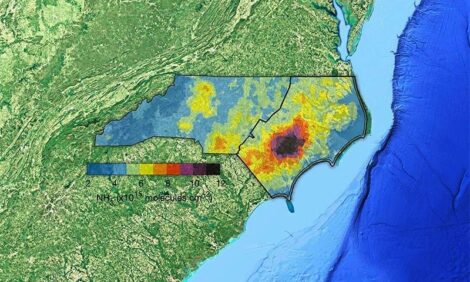



Understanding and Improving Feed Intake
By Dr. Todd See, North Carolina State University - Feed intake can account for 60 to 85 percent of the variation observed in pig growth rate during finishing (Young, 2005). The facilities and production systems in which most pigs are raised will limit feed intake in some respect.In a study at North Carolina State University comparing maximum performance potential to commercial performance, researchers found that pigs potentially could consume 27 percent more feed on a daily basis (4.87 versus 3.84 lb/day). Many factors that stress the pig can negatively affect feed intake. These stressors can include temperature, space, health, equipment, and feed and water availability.
To understand pig growth and appetite, it is important to know what performance can be expected at the difference sizes and ages of pigs. Table 1 describes "typical" finisher performance. As pigs grow, their daily feed intake (ADFI) will increase, but they will become less efficient (F:G) in converting the feed consumed into weight gain (ADG). Depending on genetic line, ADG may increase throughout finishing or plateau as pigs reach final weights. The lean growth potential of a genetic line of pigs will set the maximum performance potential that can be expected.
The growing pig is most comfortable and will achieve the best performance at temperatures below 75°F. The lower critical temperature declines from 65°F at placement in finishing to 50°F when the pig reaches a weight of 150 pounds. Forty-five pound pigs may experience as much as a 1 percent decline in feed intake for each degree above their comfort zone. Larger pigs (greater than 220 lb) may experience as much as a 2.5 percent decrease in feed intake for each additional degree in temperature above their comfort zone. Cold temperatures increase the pigs’ maintenance requirements and will also decrease pig performance even though feed intake may be higher. Average daily feed intake is also significantly reduced when the relative humidity in the barn is high. A pig’s ability to dissipate body heat through evaporation is minimized when the humidity is high.
Good health is essential. Pigs that are compromised by disease infection will suffer a 5 to 24 percent reduction in feed intake and growth rate. Diseased animals also have a higher demand for nutrients for various bodily functions, reducing nutrients available for lean growth. Maintaining biosecurity, through cleaning between groups of pigs and careful, daily animal observation, combined with early treatment can help.
Feeders need to be clean at all times, and pigs should have unlimited access to feed and clean, fresh water. Feeders should allow the pig to eat easily. Pigs should be observed to determine how long they spend eating and if they can easily get access to feed. The design of the feeder can impact feed consumption by 15 to 20 percent (Whittington et al.). Interruptions in feed supply result in decreased performance and contribute to ulcer formation and mortality. A pig requires twice as much water as feed each day (measured by weight).
Any management practice of moving pigs that upsets their established social hierarchy may decrease feed consumption for as long as 4 to 5 days.
Feed intake is one of the most important economic factors as feed costs contribute nearly 60 percent of the total production costs. Feed intake is influenced by a number of interrelated factors that should be monitored to improve growth rate and feed efficiency.
References
Whittington, D. L., Nyachoti, C. M., Patience, J. F., Gonyou, H. W., Zijlstra, R. T., and Lemay, S. P. 2000. Feed Intake – A checklist of nutritional, environmental and management strategies to achieve success. Presented at Manitoba Pork Council/PSCI Meetings on Focus on the Industry, February 2000. Online: www.thepigsite.com.Young, M. 2005. Managing growing-finishing pig diets for maximum profitability. Presented at 2005 Banff Pork Seminar. Online: www.albertapork.com.
November 2007







